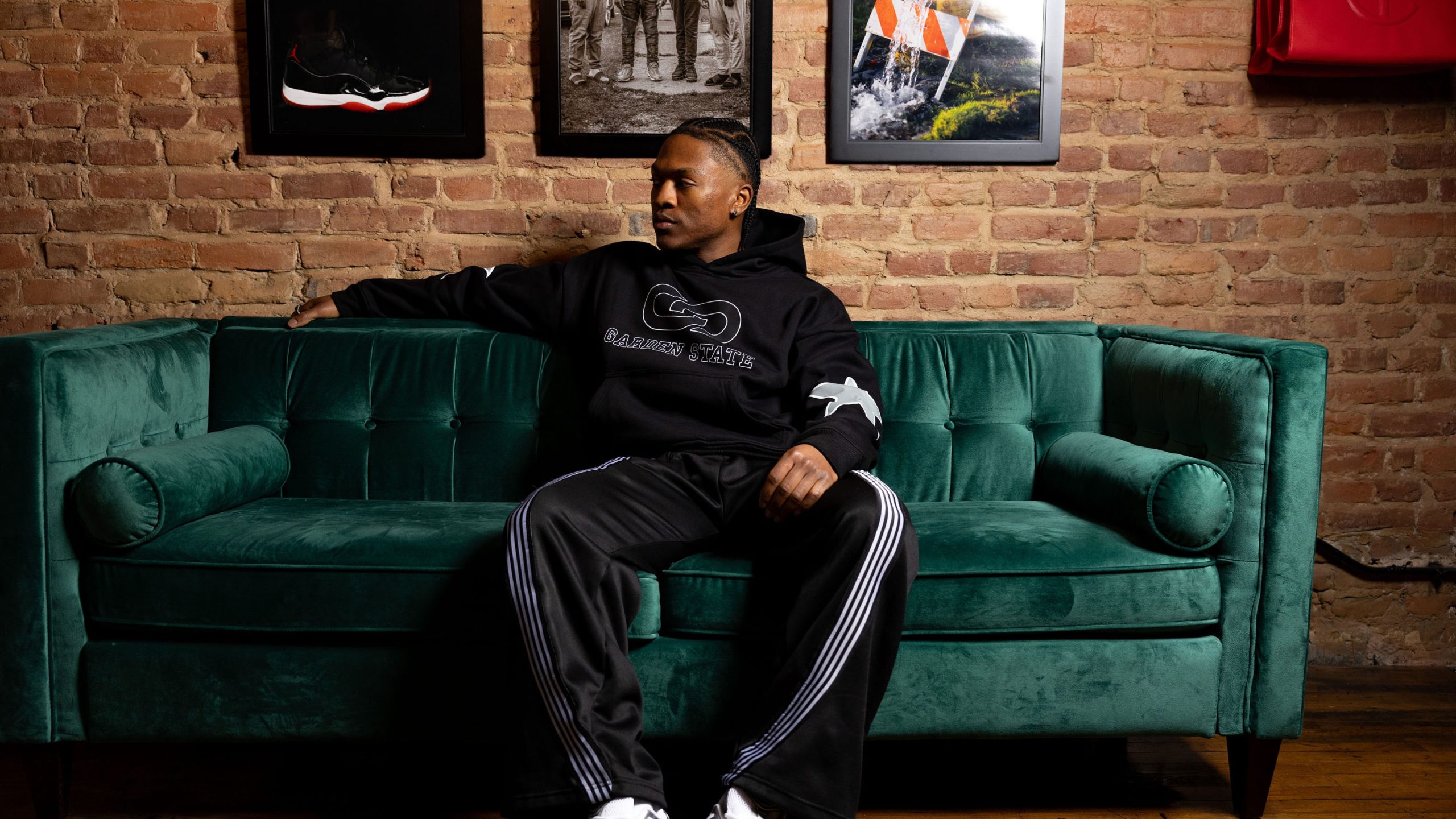
Fashion might not be top of mind when most people think of Flint. But Lee Grant Allen knows better.
“I tell people all the time that a lot of the local brands we carry are just one opportunity away from going inside a huge retailer like Saks or Neiman Marcus,” said Allen, CEO and co-founder of Bau-Hōuse, a streetwear store and art studio located at 511 Buckham Alley in downtown Flint.
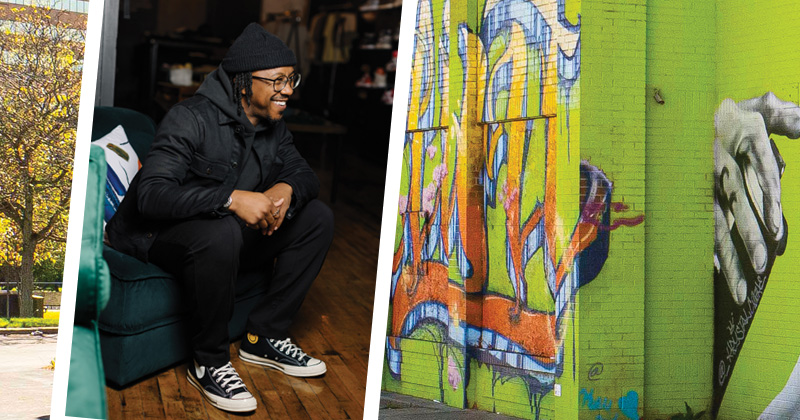
“Flint has so much potential because it’s all just raw talent and passion and creativity behind these designs.”
That mashup of positive energy combined with a supportive community is giving life to everything Flint-made from handbags to hoodies — and attracting some serious looks.
“People have embraced the Flint style and the Flint culture, and I think that’s what’s allowed them to be unique and then create streetwear that reflects the Flint personality,” said David Gibson, senior product line manager for lifestyle footwear at Hoka.
Gibson has spent much of his career in athletic footwear since graduating 15 years ago from Carman-Ainsworth. He keeps an eye on the Flint fashion scene from his home in Oregon and likes what he sees.
“I think Flint streetwear has a little bit of flash to it and a lot of personality behind it,” Gibson said.
So, what is “streetwear?” Answers differ.
At its most basic, streetwear is a style of clothing that’s comfortable and loose-fitting like hoodies, jackets, caps, bucket hats, sneakers, and graphic T-shirts. It often incorporates bold graphics, bright colors, and unique designs.
Most agree the trend started in the late 1980s and ‘90s when stylists started designing comfortable clothes you could wear on the, well, street. The style was a fusion of New York hip-hop and California skate cultures that has spread like wildfire among millennial and Gen Z creatives who made it their own, especially in urban communities.
“Streetwear and black culture … I think those two go hand in hand,” Gibson said.
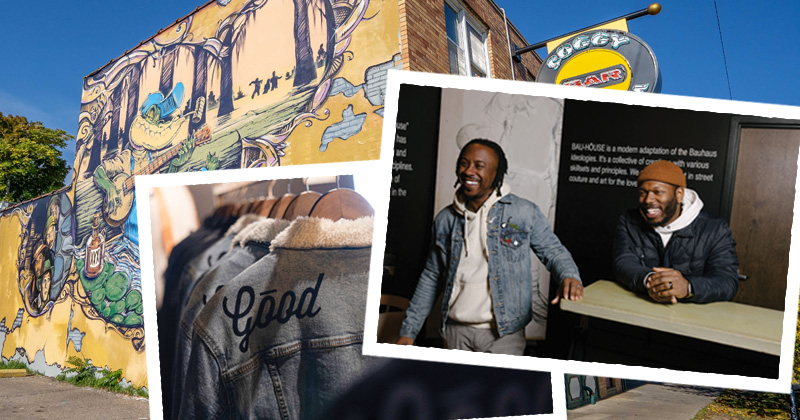
As soon as musicians, Hollywood celebrities, and influencers caught wind of the new streetwear style and shared their looks with millions of social media followers, there was no stopping it. High-end fashion brands the likes of Dior, Givenchy, and Louis Vuitton have raced to catch up by collaborating with up-and-coming streetwear labels giving hope to passionate creatives everywhere.
In Flint, each brand has its own unique look and story.
Oaklin Mixon was one of Flint’s streetwear trailblazers, founding GoodBoy Clothing in 2014. Like many who followed, the city and people of Flint inspired Mixon, who used sleek, industrial design elements in his clothing.
His collection drew national recognition in 2016 when Mixon won a major business pitch competition. Mixon, who served as a community mentor to many young designers, died five years later at the age of 38 from COVID-19 complications.
Allen, who was already setting up Bau-Hōuse downstairs, helped manage Mixon’s former space on the second floor of the building. Allen now plans to carry on Mixon’s legacy by rebranding GoodBoy Clothing to Gōod, with a macron over the first “o” serving as both a halo for Mixon and an ode to the Bau-Hōuse brand.
“Our vision just aligned for what we are trying to do for the city,” said Allen, who founded Bau-Hōuse in 2022 with his childhood best friend Antonio Forte and minority partner Keith Chaney.
The popular art and streetwear gallery offers apparel, footwear, and accessories from leading premium brands. But Bau-Hōuse always saves display space for up-and-coming designers in Flint and across the Midwest.
Allen turned the GoodBoy Clothing space upstairs into a collaboration space/art display for local creators to create custom pieces, host pop-up boutiques and workshops, learn from each other, and share their work.
And they’re always on the lookout for talent.
That includes Flint’s Starlin Hamilton, who started the See No Evil label three years ago as the next chapter in his own fashion love story.

“I’ve always dressed well, even as a kid,” Hamilton said. “I believe streetwear serves a perfect purpose to really find different ways to show how you feel and to feel really confident about that look.”
Hamilton not only designs the graphics on See No Evil’s hoodies, T-shirts, track pants, and more, he designs the clothing itself to get the perfect fit.
“Every element of the clothing is all me,” he said.
Like many savvy streetwear brands, Hamilton only sells his clothing in limited quantities to build anticipation.
“I’m just trying to find my niche and really keep growing it, through social media predominantly,” said Hamilton, who sees most sales coming through his website.
See No Evil and Soulmate, a brand founded by Channing Pearson, are among some of the hottest Flint streetwear labels Bau-Hōuse carries.
“These two, in my opinion, are doing it the best way for longevity and being true to the fashion scene and the education that it requires to have a true brand,” Allen said.
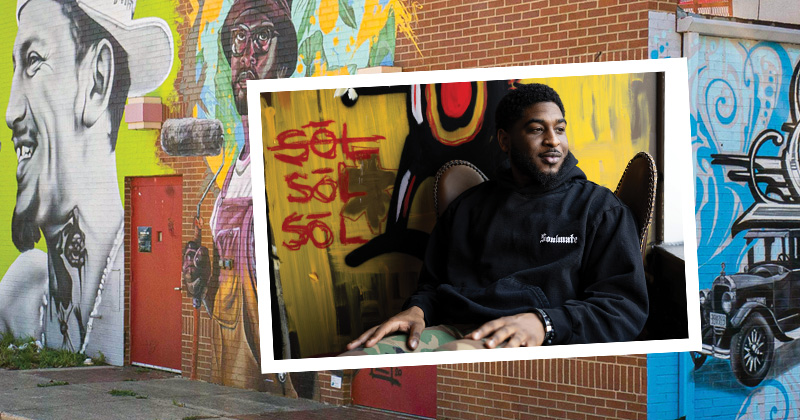
Pearson, who also grew up passionate about clothes and tennis shoes, focuses on quality over quantity.
“I really want people to feel good wearing my brand – to feel confident and like they belong,” said 24-year-old Pearson, who said Allen’s mentorship has been invaluable.
A perfect ending for Pearson and Hamilton would be a famous musician, athlete, or celebrity wearing their brand and putting them on the map.
“You’ve just got to stay consistent, put the work in, and you’ll get where you want to be,” Pearson said.
Jason Trice is another Flint native working to make a name for himself in fashion. His journey with Bedrock Apparel began in 2017 after returning to Flint from Miami to care for his mother. He used a heat press in his mom’s basement to make his first sweatshirt emblazoned with colorful lettering.
“I wore that sweatshirt to a Jay-Z concert at Little Caesars Arena and got stopped 30 or 40 times with people asking me where’d I get it,” Trice said. “I knew I was on to something.”
He sent a Bedrock hoodie in 2018 to actress Gabrielle Union-Wade, whom he befriended while working in Miami. In a lucky break for Trice, Union-Wade mentioned that “coziest of cozy” Bedrock hoodie in an interview with InStyle magazine.
“Gabrielle saying that really helped us take off and we started getting inquiries from all over the world,” said Trice, who graduated from Flint Northern in 1993.
Trice continues to build on his early success. Bedrock now carries T-shirts, hats, and other apparel in a retail space inside the FIM Capitol Theatre Building and soon online.
None of it would be possible, Trice said, without the community’s support.
“It’s people like Egypt (Otis) and Dorian (Jackson) at Comma Bookstore, Kiara (Tyler) at Kalm Clothing, my frat brothers at Alpha Phi Alpha, the ladies at Eight Ten Nail Bar and Spectacular Spudz, Lee at Bau- Hōuse, Brush Alley Skateshop selling all kinds of sneakers … we’re all really tight-knit and we all support each other,” Trice said.
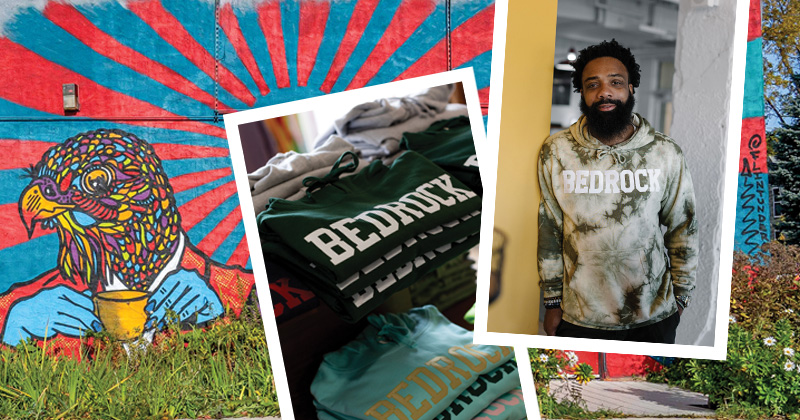
“We’re all about helping each other and supporting downtown Flint.”
To continue Flint’s momentum in the fashion space, Allen believes education is key.
“Millennials and Gen Xers have a love for fashion, a love for creating, and a love for art. What they don’t have is the knowledge to take those passions to the next level without leaving Flint,” he said.
That’s why Bau-Hōuse’s owners embarked on two new collaborations in 2023 to bridge that gap.
Bau-Hōuse has partnered with Detroit’s Pensole Lewis College (PLC) to provide fashion design education in a series of Flint workshops. PLC is a recently reinstated historically Black college specializing in sneaker and apparel design and material fabrication.
The workshops are filling a huge void, Allen said.
“Kids in Michigan, especially inner-city kids, are miles behind kids that are coming from California or New York when it comes to design education,” Allen said. “If we want to grow the fashion industry here, we must offer kids and young adults this kind of career education.”
To that end, Bau-Hōuse also joined forces with Kettering University in creating a club for students hoping to break into the fashion space. Students are encouraged to explore augmented reality, sustainability, and 3D modeling in the streetwear/retail industry.
“We see a whole lot of potential at Kettering to really drive change in the fashion space,” Allen said.
The important thing is for Flint to keep designing its one-of-a-kind fashion story.
“There’s enough room for everybody to survive in this space,” Gibson said. “The more we support each other, the more people believe in each other … anything is possible.”
